Postgraduate Design Education
An Introduction to the Postgraduate Level
Postgraduate design education generally comprises Postgraduate Certificates and Diplomas, Masters and Doctoral degree qualifications. The Framework for Higher Education Qualifications (FHEQ), published by the Quality Assurance Agency (QAA), defines the descriptions of the levels of these qualifications and sets out the characteristics exemplified by typical graduates. These help to inform Higher Education Institutions (HEIs) when developing and designing courses and setting learning outcomes. Master’s degrees are described as a level 7 qualification and the level includes Postgraduate Certificates and Diplomas. The level 7 qualification is one step up from the level 6 Bachelor’s degree with honours.
Bachelor’s, Master’s and Professional Qualifications
Defining the distinction between a Bachelor’s and Master’s degree is increasingly a challenge. This is particularly the case given the broadening of the entry profiles of students; the massification of higher education; the diversity of ability; funding restrictions; and individual perceptions. A postgraduate education sees an increase in intensity and level of the complexity of engagement. For many though, the notion of qualification inflation has led to the idea that a MA is the new BA. Some have argued that professional level qualifications such as the International Society of Typographic Designers’ (ISTD) Student Assessment Membership Scheme are as, if not more, distinctive than an undergraduate degree. Former ISTD Chair, Freda Sack, made the case to upgrade the original student Licentiate Membership to full Professional Membership as those passing were showing qualities equivalent to many professionals. The association with an illustrious body, which includes: Margaret Calvert, Wim Crouwel, Geoff White, Derek Birdsall, Vince Frost, Angus Hyland, Roger McGough, Jim Northover, Lucienne Roberts, David Quay, John Sorrell, Erik Spiekermann, Teal Triggs, Freda Sack and Jeremy Tankard, might count for more within the profession and on the curriculum vitae than a BA.
Blurred Borders and Competencies
Dr Russell Bestley has observed the blurring of the borders between the undergraduate and postgraduate levels. He has significant experience of students at both levels and suggests that often ‘a top level BA student is probably more engaged with their process and subject understanding than an average MA student’. Russell isn’t alone in acknowledging the ’emphasis and time [spent] on craft, technical skills [and] the ability to make’ that form the focus of a lot of undergraduate courses. He maintains that ‘postgraduate courses should be able to assume a level of competence from the outset and can then focus more on the hows and whys than on the whats and wheres’. Worryingly there are postgraduate students who are still struggling with the traditional undergraduate competencies at Masters level and this can impede them in reaching that next stage. As an international community of practice we need to consider the variance of acceptable standards within undergraduate education as a root cause and tackle these to ensure a maintenance of quality previously enjoyed. Russell isn’t a keen advocate of the idea of ‘theory’ as something to underpin practice. He prefers to see work that is ‘justified and supported by a good argument and clear, logical research’. He suggests that this can equally be achieved through reading theory and exposure to the thoughts of design writers as well as through practical testing and experimentation’. Below are editions of Visual Research co-authored by Russell Bestley and Ian Noble.
An Investment in Time and Money – does it pay off and for who?
A student’s decision to take a year out of employment to study in London (an expensive place to relocate to) represents a significant sacrifice in time and money. The pressure to succeed is both on the student and institution. There is a lot at stake. Some see the postgraduate courses at the London universities as finishing schools for the privileged. Russell Bestley feels particularly concerned for the poorer, equally capable and intelligent potential student. He has good reason to. Having been made redundant in the past, Russell made the decision to return to college as a mature student. He was fortunate as he was eligible for a government grant to support his retraining. Although bright and highly motivated he didn’t come from a traditionally ‘academic’ family background. There will be those of us of a similar age group and disposition that will not only empathise but be eternally grateful for the support we received in the past. How many of us would be able to go to college today if we were in the same circumstances as we were in the past? In Russell’s case there would be no Dr, no Visual Research books (amongst many others) and little documentation of graphic subcultures (his particular area of interest). Although a little troubled over the future for design education he does see the positive developments such as the existence of PhDs in graphic design. He also feels that with the growth of postgraduate design education there is also the possibility for a decent support network of engaged people.
Applicants to Master’s Study – then and now
This article considers what motivates people to undertake a Masters in Graphic Design and whether this motivation has shifted. It considers the changes that have occurred over the last decade in terms of the number of applications and the diversity of entry profiles. First we look at two case studies from the past who, though have different motivations, are not untypical of what might be seen as traditional applicants and who are in contrast to the younger applicants we might see today.
Susannah Rees, Associate Lecturer, London College of Communication (LCC)
Susannah Rees had taken a 10 year break from full-time work as an editorial designer to work part-time as a freelance designer while her three children were very young. She had been considering ways forward for her career as her youngest child was about to start school. Susannah didn’t want to continue working from home and was exploring the idea of secondary school teacher training when a friend (who was a lecturer at LCC) suggested the MA. A Masters hadn’t been something she had thought of as being ‘for her’. She applied very last minute and started the following week. She felt a renewed excitement to be able to study again a subject she’d loved, in such detail. The level of focus required was something that she had not encountered before and as a mature student the investment both financially and emotionally in undertaking a two year course was a real motivator when it came to the level of effort she needed to put in to creating a successful postgraduate project. Her work was based around design for teaching and learning and moved away from editorial design. Her experience, both with typography and raising her children, enabled her insights into devising educational schemes for aiding parents to assist their children in learning to write. During this period Susannah consulted with handwriting and type design expert Rosemary Sassoon (who had particular expertise working with children). Having the MA enabled Susannah to continue on at LCC as a Graduate Fellow and teaching assistant. She acquired her Postgraduate Certificate in Learning and Teaching to pursue a new career as a lecturer at Higher Education level. Completing the MA wasn’t just about improving her Curriculum Vitae – it was an opportunity to build her confidence and to broaden her practice. Undeniably though, it has led to new career areas that would have otherwise been closed to her. On completing her MA her project was published as a book entitled ‘Write This Way’. In the future she wishes to revisit and develop the ideas that led to her MA major project through into a PhD. Below is Susannah’s project produced as a commercial enterprise.
Paul McNeil, Course Leader MA Contemporary Typographic Media, Partner MuirMcNeil
For over 30 years, Paul McNeil worked in professional practice as a graphic designer. His business was focused on branding and identity with a specialisation in ‘brand communications for the technology and data communications industries’. After several successful years of trading he began to find the commercial environment increasingly constraining and the day-to-day activities had little relation to the aspirations of his earlier years. The particular issue, a challenge faced by many, was in maintaining the balance between finding ‘value in the work produced and running an efficient, profitable business’. The realisation was that he ‘had lost sight of this completely’. Paul explored many alternative options such as architecture or spatial design, before what he calls a ‘life-transforming conversation’ with Ian Noble, then course director of MA Typo/graphic Studies at London College of Communication. Ian was ‘extraordinarily responsive’ to Paul’s aspirations and doubts about his future direction and usefully suggested that Masters’ level study ‘might be an opportunity to fully explore the possibility of new definitions of graphic design as a more profound and long-term cultural practice than a mere service to industry alone’. For Paul ‘the intention to communicate through mark making, is a core principle of sustaining value with a history as long as that of humanity itself’. With this in mind Paul returned, in 2001, to full-time study in order to ‘explore these and similar theoretical and experimental possibilities’, which he hoped would ultimately ‘inform and enrich the quality of his practice’. He continued to run his business albeit in a scaled down, selective way and enrolled on the MA Typo/graphic Studies course. For a mature learner he found it ‘the most terrifying and deeply satisfying year’ of his life in which he was ‘challenged, provoked and inspired by both the tutors and the student peer group’. Since graduating he has made ‘conscious choices’ to ‘work on commercial projects selectively and in partnership’. Additionally Paul writes, teaches and continues to develop typographic research projects of his own. More recently he has established a business, MuirMcNeil, with his colleague Hamish Muir. Their aim is to explore ‘parametric principles in design’ which he translates as ‘the rules and principles of form-giving’. These investigations have been made commercially available as posters and typefaces. In Paul’s words he is ‘so happy to have discovered, quite late, a form of capital that is so much richer than money’. Below is a poster designed to celebrate the launch of Modern Theory.
A Model for a MA in Graphic Design
When Russell Bestley and the late Ian Noble were charged with developing and growing a broader MA in Graphic Design at London College of Communication, they took to the challenge with something of a missionary zeal. The period is documented particularly well in the two volumes of the book Visual Research that they both co-authored. On the launch of the second edition Ian typically devised a witty stamp with which to ‘sign’ the books that read ‘try to make more mistakes’. This exemplified the experimental nature of their approach to postgraduate study. Russell likens this to the notion that ‘scientists don’t conduct experiments that they know will work, they try hundreds…of different measured scenarios…to progress their knowledge’. He continues that ‘discovery requires this kind of risk – you don’t know that something doesn’t work until you actually try it’. As the American inventor Thomas Edison once claimed: ‘I have not failed. I’ve just found 10,000 ways that won’t work’. The zoologist and slightly improbably named Marston Bates stated that ‘research is the process of going up alleys to see if they are blind’. It was demanded of students on the course to establish and test their acquired knowledge and information. They had to move their position from thinking to knowing and this is pivotal to Ian and Russell’s Visual Research concept to make a ‘Claim’ then gather ‘Evidence’ to provide Qualification. Russell suggests that designers need to ‘seek out material evidence, to support their assertions and arguments’. He suggests that like a good barrister a designer should be able to ‘argue a position with supporting facts’. This had led to the quip that Russell represents something akin to ‘the logic police’. This thorough questioning of any proposition has led to an MA that includes the notion that a viable outcome may be simply a more focused and tightly-framed proposition: ‘you start with a question and end up with a better question’. In undertaking the running of the MA, Russell and Ian were able to develop their own research agenda alongside that of their students. There was a joint desire ‘to better understand the Graphic Design process itself’. Design as a product and its relationship to technology had become an ongoing exploration for many designers through the 80s and 90s. They now wanted to define and document a fundamental understanding of the inter-relationship between the design research, development and production processes. This gave rise to an awareness of ‘informed engagement’ and how the designer might make ‘more effective design if they were closely aware of their own research methodology and visual research practice’. It was their belief that in the ‘post-modern 1990s, Graphic Design was being ‘colonised by theorists from outside of the practice who were commenting on their interpretation of design approaches without the necessary understanding of the process of design from the perspective of the practitioner’. Russell explains that the shift from the Art School to a University regulatory model of higher education led to the ‘adoption of dissertations to provide an academic validation to a qualification’. These dissertations often ‘focussed on things tangential to the actual discipline itself’. What Russell and Ian wanted to reflect on was ‘how and why we design; how and why some designed things are ‘better’ solutions than others; and how that process to reach ‘better’ solutions might be harnessed and learned’. It was a distinction of this reflective postgraduate model that contextual study was not seen as separated from studio practice. Prior to his untimely death, Ian Noble had moved to Kingston University and was exploring further the notion of flexible delivery within the MA considering progression through a ’step on, step off’ approach that built towards completion via a modular system. Below are a set of word and image combinations created by Russell Bestley and Ian Noble examining the visual communication process of graphic design.
Acceleration towards Master’s Degrees
The lack of state or government funding for postgraduate study within the UK has given rise to courses of four or five year durations that integrate the Bachelor and Master’s stages. The traditional entry profile for a Masters would have constituted a period of professional practice prior to application as well as a first degree. The entrant’s purpose and intention might have included a desire to address aspects of their practice through an intense period of study. Having had experience of reading applications to postgraduate courses there is an understandable level of anxiety and concern over employability and the value of only having a purely undergraduate experience and qualification. The lack of professional opportunity within a harsh economic climate might also lead recent undergraduate students to stay on in education. The statement within the FHEQ that ‘much of the study undertaken for Master’s degrees will have been at, or informed by, the forefront of an academic or professional discipline’ suggests a level of maturity and reflection normally expected from knowledge and experience acquired through actual academic or professional practice. Is it possible to achieve this within a limited timeframe of an undergraduate three year period? Will this level of education enable them to ‘propose new hypotheses’ within the subject?
Essential Skills
With the withdrawing of funding from higher education design subjects and a climate of full fees there is the danger of educational establishments seeing themselves as purely management run businesses. In the drive to meet target numbers, responsible and ethical recruitment practices can get overlooked. HEIs are caught between a rock and a hard place. On the one hand there are the university estates to upkeep and staff salaries to be paid. On the other hand one needs to ensure that risks aren’t being taken at the expense of the student. This begins to impact the quality of the provision both in terms of academic learning and teaching practice but also the subject discipline. Many are seeing a decline in the level of the basic attributes required of graduates and postgraduate students. Martin Roth, Director of the Victoria and Albert Museum, suggests that ‘UK design education is failing students’ and that too many design graduates are lacking ‘basic skills’. Postgraduate courses are now having to build skills training into their provision to compensate, not just for the shortcomings of UK undergraduate design education, but for this lack in students arriving from abroad. It’s a global design crisis and we are at a watershed moment in considering what the subject and educational values are. Roth extends his criticism beyond technical skills to contextual subject knowledge. In a competitive race for institutions to be seen as ‘groundbreaking’ and ‘innovative’, timeless and enduring knowledge is being compromised.
Lessons from the Past
At the Munich ’72 Design Legacy Symposium, a panel comprising Ian McLaren, Hans Dieter Reichert, Lucienne Roberts, Mason Wells and Tony Brook (all who have experience of the profession and education) raised concerns over the undefined notions of what UK students and educators see as ‘creativity’. Wells and Brooks encouraged a more holistic view where the technical and creative are considered in equal measures. Brook in particular reflected upon his company’s increase in employment of non-UK designers in recent years. Could there be something deficient in current UK design education from an employers perspective? With all the ‘advances’ in quality assurance, learning and teaching theory and insightful management what could possibly have gone wrong? Perhaps there are lessons from the past that could be applied to the future – perhaps there are still principles worth adhering to. Below is a poster from the Munich 1972 Olympic Games. Ian McLaren was part of the design team. The poster demonstrates basic design principles such as typography, structure and colour.
Academic Culture Shock
Differences between entrant expectations and that of the welcoming institution can lead to academic culture shock. A postgraduate education is different from an undergraduate one. They are at different levels and there are different expectations. The postgraduate workload is more intense. The amount of self-directed study is increased. There is a requirement for a high degree of motivation. You are expected to have a developed knowledge of the subject and a critical position. Institutions differ not only within a national context but also globally. What passes for muster in one institution won’t necessarily garner support in another. Students should expect a far more critical environment from that which they experienced at undergraduate level. If students wish to study at high profile establishments then they will be expected to raise their game considerably, not only in terms of their design ability, but also intellectually. Given the cost in terms of time and money, applicants really do need to do their research, ask questions and shop around. Don’t just come to London because it’s a cool place to hang out for a year.
Postgraduate Certificates and Diplomas
Postgraduate Certificates and Diplomas often have a professional development focus although they can also be used as a bridging study to a Masters course. They are short enough to run in part-time or full-time mode to enable those working part-time or with family responsibilities to undertake flexible study. These types of qualifications provide a step up for those that have been engaging with short courses and would like a period of sustained study leading to a recognised qualification. Progression from Postgraduate Certificates, through Diplomas and onto Masters sees an increase in the level of intensity and complexity of study. Given the nature of applicants to Postgraduate Certificates and Diplomas, in that they are mature students often working and managing family life, there has been much debate as to how academic institutions are supporting the ambitions of these types of people. Many would like to see the notion of stepping on and off the three phases of a Masters being far more accommodated. The credit framework logically suggests this as a viable academic and financial possibility. This would then allow applicants to study at their own pace and within their financial constraints. They could study a Postgraduate Certificate part-time over a year. They could then take a break and earn some money or gain professional practice experience. They would then be able to come back and perhaps study a Postgraduate Diploma for 15 weeks full-time. After successfully completing this, they could then then do a further trade in of their current qualification to achieve a Masters in a final phase of study at the time of their choosing and money permitting.
Design for Visual Communication
The Postgraduate Certificate and Diploma Design for Visual Communication courses at London College of Communication were set up to accommodate those progressing from short courses, wishing to engage with a more sustained period of study and leading to a recognised qualification. The course also supports those wishing to progress to Masters study but who haven’t met the entry requirements for the level in terms of their portfolio or application statement. This allows Masters courses to encourage talent where they see it but where it is still under-developed. These courses introduce design research methods to compliment the students original academic research abilities. Design principles are examined from the fundamentals up. These include: Type Classification; Typographic Hierarchy; Colour; Visual Language and Grammar; and Information Design. The related theoretical underpinning is delivered within the practical studio sessions so that theory and practice are integrated. As the late, great, Ian Noble once commented: ‘it’s the theory of practice and not the practice of theory’. Professor Teal Triggs, Associate Dean at the Royal College of Art, has commented further that ‘theory doesn’t make you a better designer rather a more informed practitioner’. Through reflective learning this is the aim of professional development at postgraduate level. Further units consider the academic and professional contexts and enable a degree of self-determination. London College of Communication is an institution that had the vision to maintain its analogue facilities whilst developing its digital provision. Students now can benefit from mixing analogue and digital techniques to develop new visual languages supporting their conceptual development. Most postgraduate design courses complete the academic session with a major project. This begins with a period of project exploration to develop a design research question. Students coming from other academic disciplines and previous text-based subjects tend to research as if they are going to write an essay. Design students adopt some of these traditional primary and secondary research techniques, but are to apply critical analysis alongside practical visual testing. The project will have to be transformed into a visual outcome. A good design research question contains the design area (typography, information design, editorial design, etc); the focus of the project; and the intended audience or user. This will clarify the intention and purpose of the project. The image below is by Laura Rooney and is a letterpress cover produced by Mirabel Fawcett and Vanessa Wong.
Who is Studying Postgraduate Professional Development Design Courses?
Applicants to the Postgraduate Certificate and Diploma Design for Visual Communication courses come from diverse cultural, social, professional and academic backgrounds. For some it is a return to a first love having followed parental, peer or academic pressure to pursue a traditional university subject. Having realised that life is longer than three years, and often feeling trapped in an administrative role, the course provides another roll of the dice. The course is home to a truly international cohort: from Canada to Russia and all the countries in between. Students have previously been involved in: geography, linguistics, opera, acting, rugby, genetics, history, fashion and product design amongst many other disciplines. They go on to set up shops (LMNOP Shop in Brighton); record labels (Default Position); work freelance; write and edit books (Valentina D’Efilippo: The Infographic History of the World); and join high profile agencies such as Bibliothèque, Sea Design, Unit Editions, Design Council, Intro and Information Is Beautiful. These are the typical career converters who desire professional up-skilling. Another group wish to acquire the academic skills to enable them to progress onto Masters study. Tim Molloy, who was Head of Creative Direction at the Science Museum, described Design for Visual Communication as a foundation course for postgraduate study. It has often been thought of as the unofficial year one of an MA. There is a new third strand of postgraduate applicant emerging. As notions of graphicacy join the traditional academic skills of numeracy and literacy, other disciplines, professions and organisations see visual communication as vital to their future functioning. Below is Valentina D’Efilippo’s co-authored book The Infographic History of the World.
Two Case Studies of the New Postgraduate Design Applicant Profile
Cat Drew, Senior Policy Advisor to the Home Office, Head of Police Digitisation Delivery and Policy Design Lab
Cat Drew is Senior Policy Advisor at the Home Office. Her main interest is in data visualisation and she would like to take forward the transparency agenda by visualising and therefore making accessible the large amounts of data that Government and public services are now making available, so that citizens can properly hold the state to account. Cat has been asked to work for Policy Lab which is the Government’s new creative space that takes design practices (e.g. ethnography, prototyping, service user journeys, data science and visualisation and behavioural economics) and apply them to public policymaking. As Head of Police Digitisation Delivery in the Home Office, Cat has brought Surrey and Sussex police together with Policy Lab to do the first Lab project around designing a better online reporting and investigation service for the public. Whilst studying on the Postgraduate Certificate in Design for Visual Communication, Cat devised a stop and search website as well as an investigation into Dalston’s gentrification. She is now undertaking her MA in Graphic Design and has been looking at ways in which design can engage Dalston citizens in the promotion and creation of connections between others in the area. She wants to take Dalston Bridge beyond just fundraising connections and promote and create other sorts of connections in the area as the neighbourhood gentrifies. Cat has already produced a prototype where she designed luggage tags and asked people to fill in one side with what Dalston had given them, and then what they would give to Dalston on the other side. These were then hung up in the Dalston square so others could interact with them. Below is Cat’s proposal for the Home Office Stop and Search website.
Amanda Perry-Kessaris, Professor of Law, Kent Law School, University of Kent
Amanda came to the Postgraduate Certificate Design for Visual Communication course with no prior experience in visual methods. Her overarching objectives in relation to the course are to be able to produce visualisations for her legal research, and to bring visual communication to the attention of her colleagues in legal academia. Amanda plans to use her visual grammar project to teach undergraduate students about differences between legal principle and legal reality; to create a 3D model to demonstrate the meaning of the term ‘critical perspectives on law’; and to run a workshop helping legal academics to visualise a quotation using typography and collage. Amanda identifies graphic design as a multi-faceted and evolving field of thinking and practice. She has been especially interested in tracking two tensions inherent to the discipline: designer versus author and commercial versus ethical (as seen in the First Things First manifesto) and more commonly, in the tendency for designers to produce self-authored pieces. These issues have huge resonance for her as an academic who both wants to be in control of how her research looks, and is troubled by the awkward relationship between research and consultancy work. She sees much productive thinking to be done about what designers and legal academics can learn from each other in this respect. In Amanda’s own words, she is ‘learning to look’. She has formed the habit of systematically and critically analysing both self-consciously produced designs, and the general visual environment. An invaluable consequence is that she is developing (greatly aided by participation in resources such as blogs) the ability to offer, receive and respond to, feedback, all of which are crucial to further progress. The impact she sees as already clear in her work as a legal academic. She has introduced short tasks ending with pin-up critiques into a PhD Research Methods course. She is able to give feedback on use of colour and typography in slides and posters, and to help students to give each other feedback. She has also added a compulsory blog component to a new Masters level module. Below is one of a series of images by Professor of Law Amanda Perry-Kessaris to provoke discussion on different aspects of law.
Doctoral Degrees
The FHEQ define doctoral degrees as ‘the creation and interpretation of new knowledge, through original research…of a quality to satisfy peer review [and] extend the forefront of the discipline…’. To paraphrase Dr Russell Bestley you become an acknowledged specialist researcher and expert in the chosen field. Russell goes on to state a ‘PhD is a qualification that acknowledges the ability to research – it is not a qualification on the specific topic or subject under investigation’. He suggests that the purpose of the qualification is ‘to measure the effectiveness of the [researcher’s] methods and their argument, validated through a structured and logical body of research’. Russell continues that since all PhDs are by definition in some way unique then ‘the system to measure success or otherwise needs to be transparent and able to be applied across disparate subject fields and methods’. When asked about the notion of practice-based PhDs he offers a note of caution. ‘The danger in rewarding practice for practice sake’ he suggests ‘is similar to some Art PhDs – just because something is very well produced and worthy doesn’t mean that it is a contribution to knowledge that is transferable, understandable and repeatable’. Russell isn’t wishing to perpetuate the idea of exclusivity or elitism. He goes on to state ‘Hitchcock never got a PhD. Picasso never got a PhD. It doesn’t mean that they were not brilliant at what they did’. A PhD needs to be able to describe the innovation or knowledge being established to others ‘so that they can learn, repeat or adapt this for themselves’. Russell concludes ‘I like the fact that knowledge in this way is a kind of communal thing, not something for individual geniuses to possess – the PhD is a small addition to the greater pot of knowledge’. The Times Higher Education website recently asked: ‘Who would do a PhD [given the sacrifices]?’. The Higher Education Statistics Agency answered ‘quite a few’ given that the UK has seen a 50 percent increase in people obtaining PhDs over the last 10 years. There is little to suggest that a PhD on the CV will necessarily lead to a burgeoning academic career despite that being an initial motivation for some. There is a developing appreciation of PhD level study within certain ‘research-active’ companies like Google which may suggest an alternative pursuit within commerce for post-doctoral researchers. Either way the five case studies within the Times Higher Education article suggests a PhD is not something that is for everyone and shouldn’t be undertaken lightly. Some responses to the article suggest that a degree of maturity, knowledge and experience have advantages if not being necessary requirements. Although the Times Higher Education suggests that academia is ‘a career for which vacancies were never more oversubscribed’, a PhD level qualification is now being added as the requirement for Senior Lecturer posts. Whilst this is a legitimate desire, some caution needs to be practiced in that this doesn’t narrow the diversity of teaching staff and their alternative life experiences and expertise. As indicated within this article there are specific reasons for undertaking a PhD. A PhD shouldn’t be downgraded through qualification inflation to the idea of a minimum level requirement. This could encourage the not so well motivated intention for undertaking a PhD. Darren Raven who studied at the Royal College of Art and is Senior Lecturer at Staffordshire University is undertaking a Doctorate in Education (EdD). He suggests that there is more of a tradition within other disciplines (outside of art and design) of the progression from undergraduate degree to PhD to Lecturer and then to Senior Lecturer. Perhaps with the traditional Art School being absorbed into the University structure there is this additional pressure to conform. Darren questions whether the driver for PhDs within art and design might partly be due to meeting Research Assessment Exercise (RAE) targets; HE league tables; and student satisfaction surveys. He likewise cautions that higher education managers need to act responsibly within their staff recruitment to preserve the richest possible selection on offer to students.
Joanna Choukier
Joanna Choukeir is a social design practitioner, researcher and educator. She is the Design and Innovation Director at Uscreates, a London-based strategic consultancy pioneering innovative work to help organisations maximise their social value. Joanna is currently in the process of completing a PhD at the University of the Arts London (UAL). The research is based on developing communication design methods to enhance social integration in post-conflict communities and takes the experience of the youth in Lebanon as a case study. She is an active user of social media communication to further the messages she cares about passionately which includes the current ongoing conflict in Gaza. Previously Joanna completed a BA in Graphic Design at Notre Dame University Lebanon in 2003 and a MA in Graphic Design at LCC in 2008. Her purpose in undertaking an MA was to explore new opportunities and practices within socio-political design. The MA afforded her the time and discipline to investigate her major project theme. On completing her studies she was able to enter the related sector of the design profession. This involves social design interventions to tackle social challenges mostly faced by public sector organisations in the UK for example health, wellbeing, education, employment and housing. Her aim would be to work with the United Nations to help them use design and innovation on their change programmes globally. Joanna is what Dr Russell Bestley refers to an an ‘engaged practitioner’ and she encourages designers to question routine approaches and ask themselves why or how they could be doing things better. She is concerned when designers disconnect themselves from the purpose of design and what it is they are trying to achieve. Her advice to anyone considering an MA would be to ‘think about your goal and where you want to be before you join a course, then use your time on the course to help get you there’. The desire to undertake a PhD arose from an insight from her MA research which opened a range of broader questions about social integration in Lebanon. She felt this could be addressed within ‘the structure and discipline of PhD research’. Joanna describes three strands within her operations, that of ‘keeping an academic hat, a practitioner’s hat and a lecturer’s hat on’. It is these three areas that help her ‘best engage with the design discipline’. A part-time PhD allowed her the flexibility to do this while still working and teaching. Joanna agrees with the observation that a Masters is more structured whilst a PhD is more self-directed. She describes an MA as being ‘more about a journey of discovery and experimentation’. Joanna continues: ‘with a PhD…one has to have a very clear focus and sense of purpose and a great passion for the research subject to sustain [the necessary] efforts and contributions for 5+ years’. A PhD has an increased level of rigour ‘requiring the researcher to fully explore the theoretical, historical and contemporary landscape of their field of study and identify a genuine and valuable contribution to knowledge’. Joanna suggests that often one undertakes a MA to support personal growth, whilst PhD research equally supports the growth of other researchers and practitioners working within the related field of study. She believes PhDs in design are vital and that ‘rigorous, evidence-based research on the value and contributions that the design discipline has to offer are scarce’. Joanna is committed to the idea that ‘there is a need for more research to make the case for design socially, economically, culturally and environmentally’. Although Joanna firmly believes in the contribution of PhD level research for academic institutions and society she also feels that ‘it’s important for a design researcher to keep practicing design as much as possible and immerse themselves in the discipline they are researching’.
Sheila Pontis
Sheila Pontis describes herself as being involved in three design spheres: education, research and practice. She teaches design principles such as information design and typography across a range of institutions. Her research primarily focuses on the ‘sense-making of visualisations of large data sets’. Her practice involves consultancy and project management of editorial and diagrammatic work. In 2008 her ‘passion for complex diagrams and information design’ brought her to London to complete a PhD. Prior to her PhD, Sheila undertook a MRes and MPhil. She states that in a Masters programme ‘the research process was more structured and contained as there was a specific timeframe in which the project needed to be completed’. Her PhD, however, went through a ‘much longer and organic process’ – it involved more independent decision-making. For Sheila it was fundamental to have a good supervisor and describes this as ‘the most important part of the process’. She sees undertaking a PhD as ‘a very personal decision’ and focused on her emerging subject interests related to her professional development. Initially, she wanted to expand her ‘understanding of designers’ thinking process, and also better understand the “why” behind some design decisions and solutions’. Beyond this it has helped her develop alternative perspectives on theories and models and to establish connections between the not-so-obvious aspects. The process has developed her critical thinking and realisation of supporting ideas with data. She still believes though that this ‘objectivity’ should be balanced with a desire and confidence to follow her instincts. Sheila’s view is that ‘research in the design discipline is still at an early stage in comparison with other disciplines such as Human-Computer Interaction’. This sometimes can provide a difficulty in seeing a ‘clear and direct connection’ between the academic theory and the professional practice of design. Looking back there were times when Sheila felt her PhD experience to have lonely moments. She appreciated working with other PhD students even if that was just by sharing a space and project findings. She is critical of some aspects of the PhD process: ‘it was tough in the sense that when I started mine there was even less structure and clarity about the whole process, and that made some phases tougher than they should have been’. She feels that the challenge of a PhD is better resolved when there is ‘a supporting research community’.
Alison Barnes
As with other mature students, Alison had arrived at a point in her life where the usual challenges of work were waning and felt a desire to explore something on a personal basis. She had been thinking for sometime of relocation to Australia and realized that a PhD would be a job requirement: ‘professionally it is clearly the way Higher Education staffing is going’. Her previous MA had engendered her excitement of research-based design. She defines the key differences between the MA and PhD as having to engage with and understand what research methodologies were and ‘how research design needs to be constructed and framed’. On reflection she feels that ‘we [don’t] prepare design students at all well for this’. Alison’s MA and ensuing PhD both were connected by psycho-geography: ‘for me the PhD was an extension to the Masters, and I guess it was important both personally and professionally’. The PhD was a particular challenge for Alison. From an early age she sensed that others may have questioned her academic abilities, she reflects: ‘getting the highest qualification was effectively two fingers up to those who had destined me to achieve nothing’. As with another case study in this article the role of the supervisor is emphasized: ‘I was lucky to have a Professor of Geography from Queen Mary University London as one of my supervisors and I can remember her asking me to write something early on about my methodology’. It was this experience that focused her attention on the lack of research thinking within design education. She felt her MA was a life changing experience but that research was not articulated in a fashion that considered qualitative methods and research design in such a formal way. In design there is a tendency to design the project then write about it afterwards. Not wishing to pass on the blame she does admit that this could have been her own lack of insight. She would be keen to see more emphasis put on ‘Research with a capital R’ both at undergraduate and Masters level in the UK. Alison comments that ‘to have three years to delve into really interesting reading that inspires your thinking, making and writing is quite an incredible opportunity’. She believes that designers need to be taken more seriously in terms of their research capacity and ‘that the old notion of a service-led profession is really a disservice in terms of what designers now often do and are capable of’. From her experience ‘post PhD is a difficult [landscape] to negotiate’, she has returned to teaching but wishes ‘to develop a more research focused career’. Alison concludes ‘that although we are encouraging more PhDs in Design, the post doctoral and research focused positions aren’t there to further develop this territory’. Below is Alison’s map of graffiti in New Basford, Nottingham.
Conclusion
Although this article has been critical of some of the emerging conditions of postgraduate design education we are equally at an exciting watershed point of potential change. Despite increasing numbers, if HEIs can stay focused on providing a high quality education then an increase in the number of well-educated designers could be a positive outcome. Courses need the support of their management in genuinely maintaining an appropriate level of provision. Teachers and their students need to remember the original purpose of their intentions. PhD level design research is putting the subject discipline at the forefront of contemporary discussion. Other subject disciplines as well as government departments see design as integral to future developments and policy making. Design is respecting its roots and discovering new branches with a strong central core of knowledge and practice. Despite rising tuition fees and the attendant pressures experienced by students, staff and institutions, now is a good time to be studying design but do your research before buying your design experience and make the most of your time and available facilities.





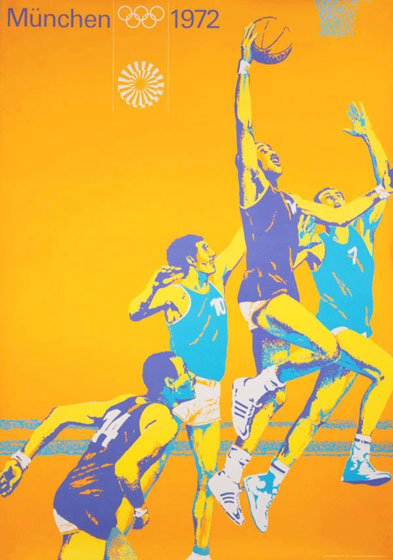





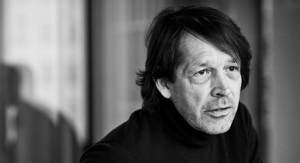
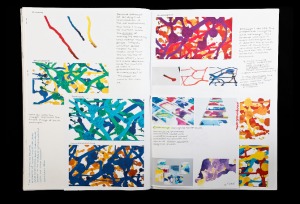




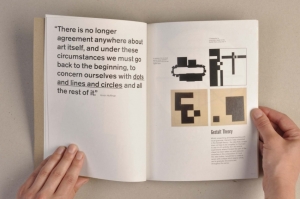




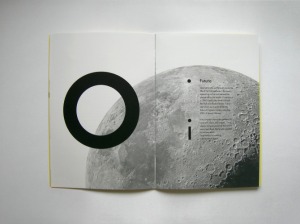



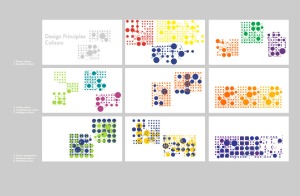
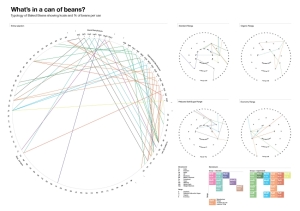









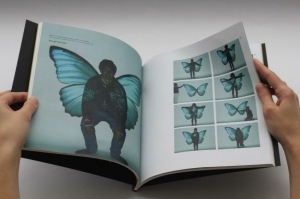


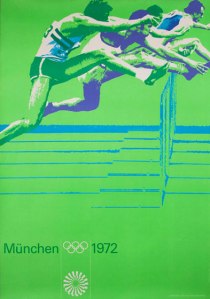

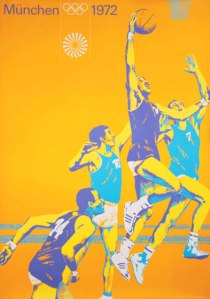
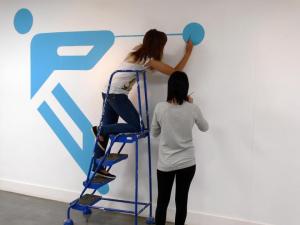


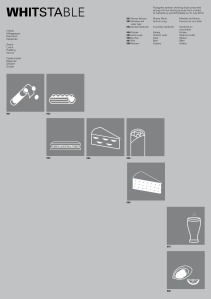



Reply